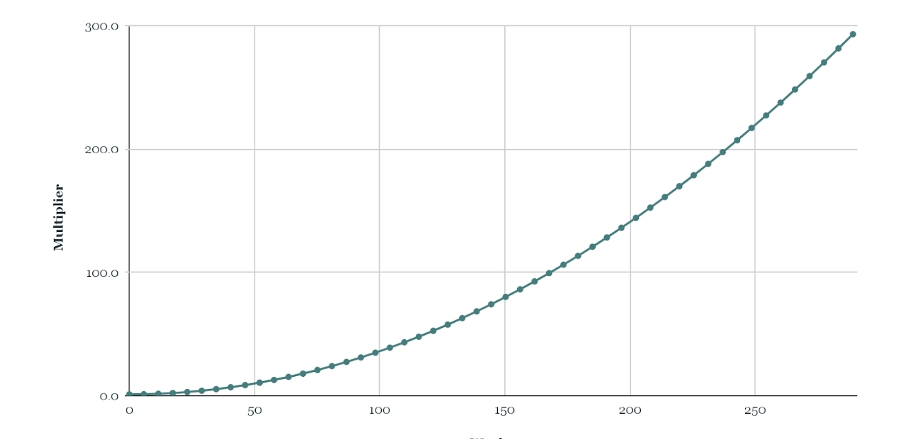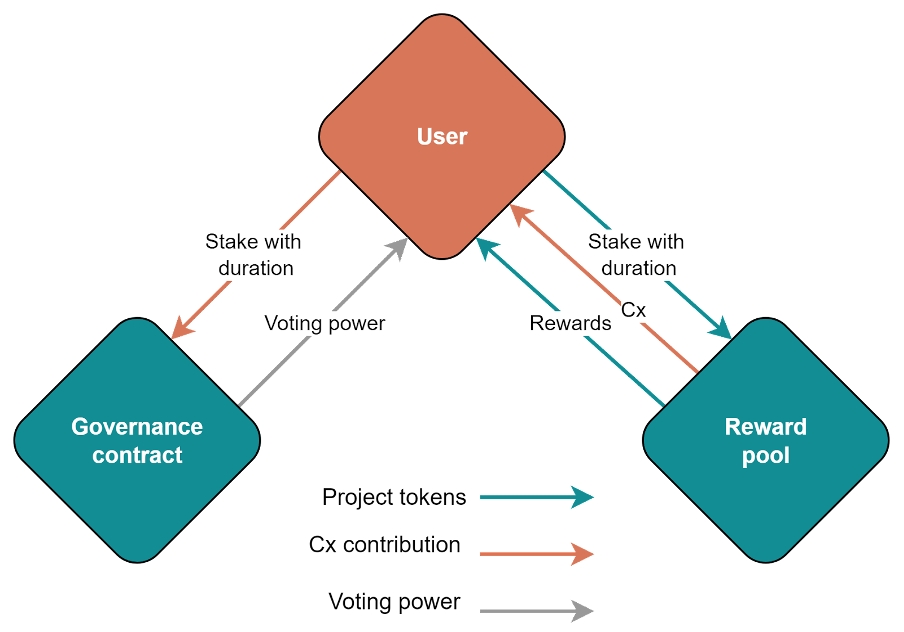Governance Voting
Building a system with no centralized decision making process ensures that the Anyone Network remains resilient to external threats. Governance is a key part of ensuring that routing functionality and rewards function sustainably, the network is safe from malicious use, and that innovation can still continue.
Voting Power
The Anyone Network management will begin as centralized and gradually develop into a decentralized platform governed by its DAO members via a dedicated governance token derived from the staked $ANYONE Token. Creating a functioning governance framework is a massive undertaking. Lest the whole is less than the sum of its parts, it needs to be created carefully with checks and balances.
Voting will be done via lock-staked tokens (LS). LS tokens will be assigned a voting power by double-staking (locking staked tokens for various durations). Additionally, to avoid system centralization and collusion, the voting will be done via quadratic voting. This means that the final voting power that a user has grows slower and slower the more tokens they have. More formally:
Where:
is voting power.
is the user contribution, outlined as the double-staked tokens
is a duration-based multiplier.
We can then define as follows:
Multiplier as a function of the staking duration.
Where is the duration of the stake in weeks, this gives us the following multiplier curve based on duration.

The maximum multiplier is capped at 290. Here is a depiction of the whole process:

The above setup has several very desirable properties:
Voting becomes an extension of delegated staking, meaning that stakers and voters are awarded from the same pool.
Voting does not provide any additional rewards compared to just staking, thus ensuring that only people interested in governing the system would participate since it requires a much longer token lockup.
Voting tokens become “double locked," once via staking and then a second time for voting, ensuring they are taken out of circulation for the long term.
It allows us to have significantly more aggressive multipliers for voting since they do not impact the rewards received.
Loyal users (those who lock their staking and vote in the long term) benefit significantly from both multipliers.
The DAO Wallet and Incubation Fund
One of the key areas of influence for governance-active holders is the allocation of funds to builders and products on top of the Anyone Network. The DAO and Incubation Fund can accelerate innovation and adoption atop the network through targeted hackathons, grants and community participation incentives. Users will have the ability to create funding proposals that are then voted on through the mechanisms detailed above, though with the precise implementation subject to change.